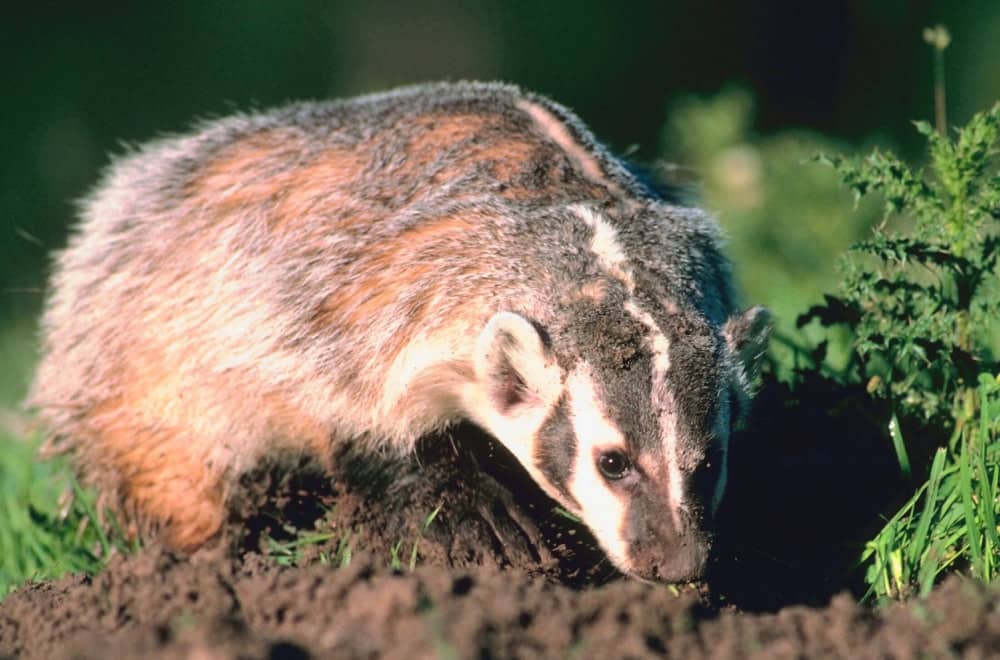Situations and Solutions
Badgers preying on poultry: To protect animals from Badgers, make sure henhouses or other enclosures are well protected by using heavy-gauge mesh wire to cover up holes in the structures. If this does not keep predators out, sturdy mesh screening can be buried vertically several feet deep around the outer perimeter of the structure.
Badger holes causing injury to livestock: This is an urban myth. Research shows that Badger holes are not a cause of damage to livestock. Their holes are very large and are quite visible to grazing animals.
Aggression towards humans: Badgers have a bad reputation. One thing that gives them this reputation is their ferocious sounding snarl. A baby will even sound vicious while nursing from its mother. They are no more aggressive than any other animal when cornered. Treat the Badger with respect, not fear.
Badgers are often considered pests when in fact they can be a strong ally, particularly for farmers. They are an important part of the food chain, managing the rodent, snake, rabbit, and insect populations. Ground Squirrels can be a concern for farmers and the Badger can help as they are a voracious consumer of these rodents. Understanding and tolerance is the key.
Natural History
Badgers are members of the Mustelid family. They have fat, low-slung bodies with long hair and short, stout, strong legs with 5 toes and strong claws on each foot for digging. Badgers are about 60 cm long and weigh 5-10 kg. A litter of 1-5 cubs, with an average of 2-3 are born from March to May. Badgers are nocturnal animals that hunt and inspect their territories at night. They become inactive and go into a deep sleep during the winter, but do not go into a true hibernation state. They are very skillful predators by using their acute smell, sight and hearing. They search for food both above and below ground, digging with their strong feet and claws. Badgers are territorial and use scent glands to mark their boundaries.
Preferred habitat is grassland. Badgers eat a wide variety of foods, mainly seeds, berries, and other wild fruits. They also feed on ground squirrels, worms, beetles, bees, lizards, snakes, ground-nesting birds and their eggs, young rabbits and even carrion from larger predators. Their jaws are extremely strong with well- developed canine and shearing teeth, so they can penetrate the skulls of their prey with a single bite. Sometimes Badgers bury kills for later consumption.
Humans are Badgers' main enemies because of habitat lost to human development and trapping for pelts. Although Badgers normally appear lumbering, they can move quickly when threatened, either to attack or escape. They are known for their ferocious fighting behaviour and dangerously sharp teeth and claws.


